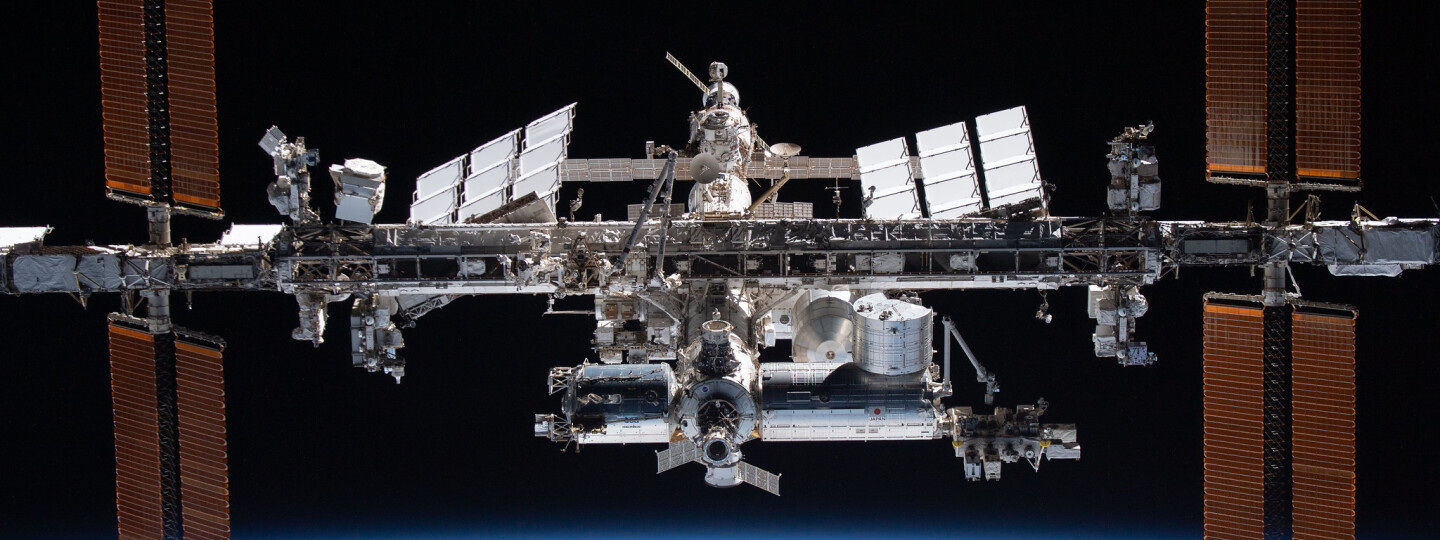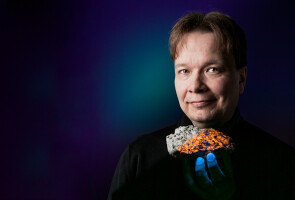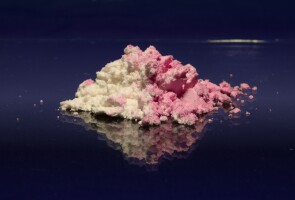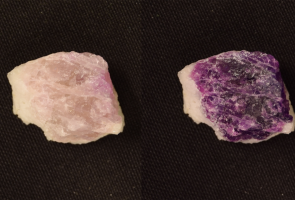Hackmanite, a mineral that is extensively studied and developed at the University of Turku, will be taken to the International Space Station as part of a new research project between the European Space Agency (ESA) and the University of Turku. The study will investigate whether hackmanite can be used as a radiation detector for different materials in space.
Hackmanite samples prepared at the Department of Chemistry of the University of Turku were launched to the International Space Station (ISS) with a SpaceX rocket on Tuesday 5 November. Once the rocket has arrived at the station, two hackmanite plates will be installed on a materials research platform outside the Space Station to measure radiation levels.
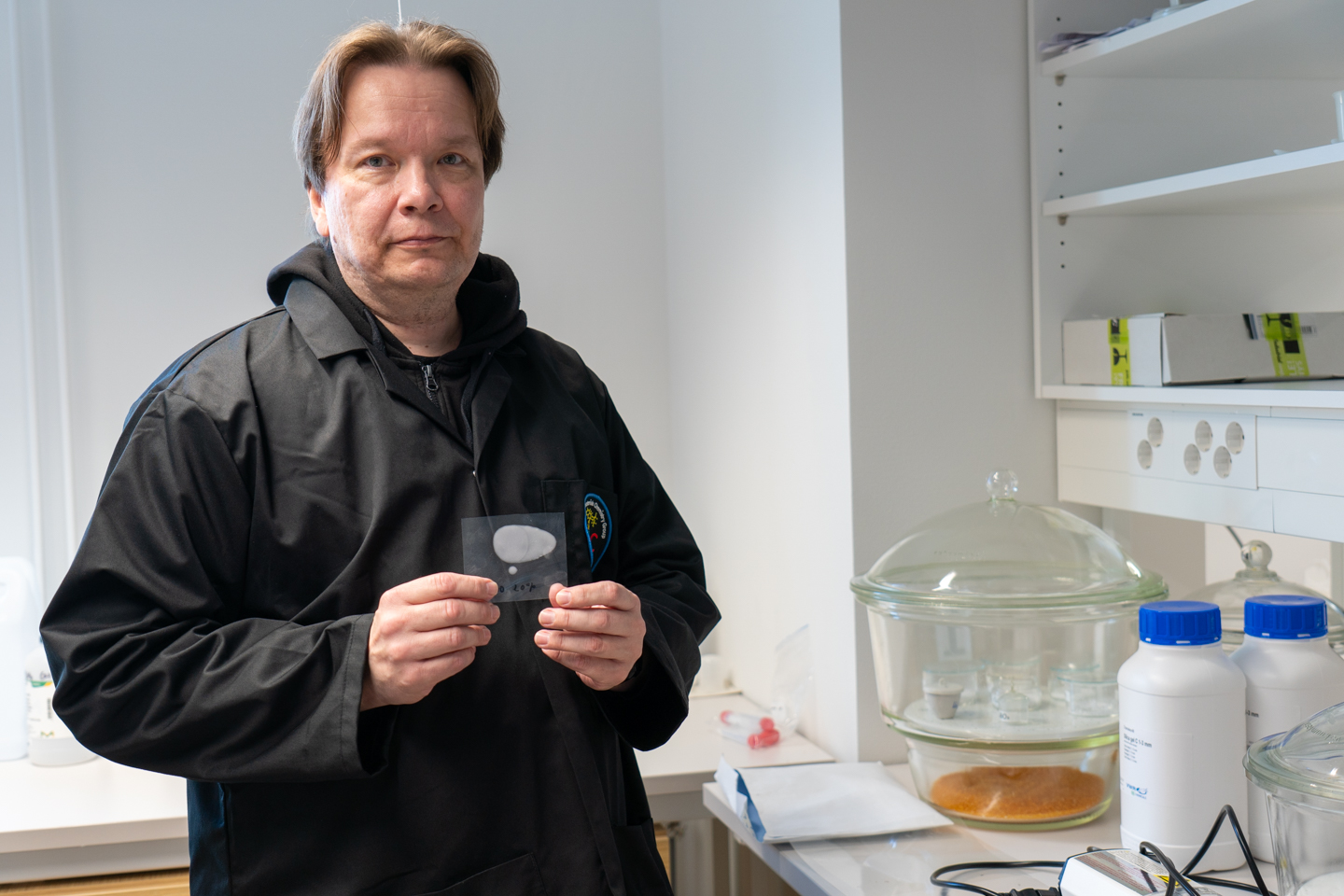
Mika Lastusaari is holding the same kind of hackmanite membrane that will be sent to the International Space Station (ISS) for examination. When exposed to UV radiation, the hackmanite turns purple, and after exposure the material returns to its original colour.
The new materials research project funded by the European Space Agency (ESA) is investigating whether hackmanite can measure the UV radiation that different materials are exposed to during space missions.
“If our research shows that hackmanite works well in space, it could ideally replace the current radiation detectors used in materials research in this challenging environment. Astronauts' suits could also have hackmanite plates that indicate the radiation they are exposed to during spacewalks,” says Mika Lastusaari, Professor of Intelligent Materials Chemistry and the leader of the research group.
The space station currently uses expensive electronic dosimeters that are cumbersome to install. The researchers believe that hackmanite is particularly well suited for measuring space radiation because it does not require electricity or special equipment to function, relying instead on colour changes in the mineral caused by radiation. It is also an inexpensive material that is easy to manufacture.
“Hackmanite withstands the extreme conditions of space well and can easily measure radiation without electricity or complex equipment. Its properties make it ideal for space application, and the radiation in space is just right for hackmanite," says Sami Vuori, PhD..
The research project will last from six months to a year, during which time the data collected by the astronauts will be analysed by both ESA and the University of Turku.
The possible further development of hackmanite for space applications will depend on the results of the suitability of the material as the project progresses.
“I don't know how unique it is for a research group to get a material they have developed to be tested at the International Space Station, but for us at least this is a really big moment. It is great to be able to study how hackmanite behaves in space," says Lastusaari.
– En tiedä kuinka ainutlaatuista tutkimusryhmälle on saada kehittämäänsä materiaalia avaruusasemalle, mutta ainakin meille tämä on todella suuri hetki. On hienoa päästä kokeilemaan miten hackmaniitti avaruudessa käyttäytyy, Lastusaari sanoo.
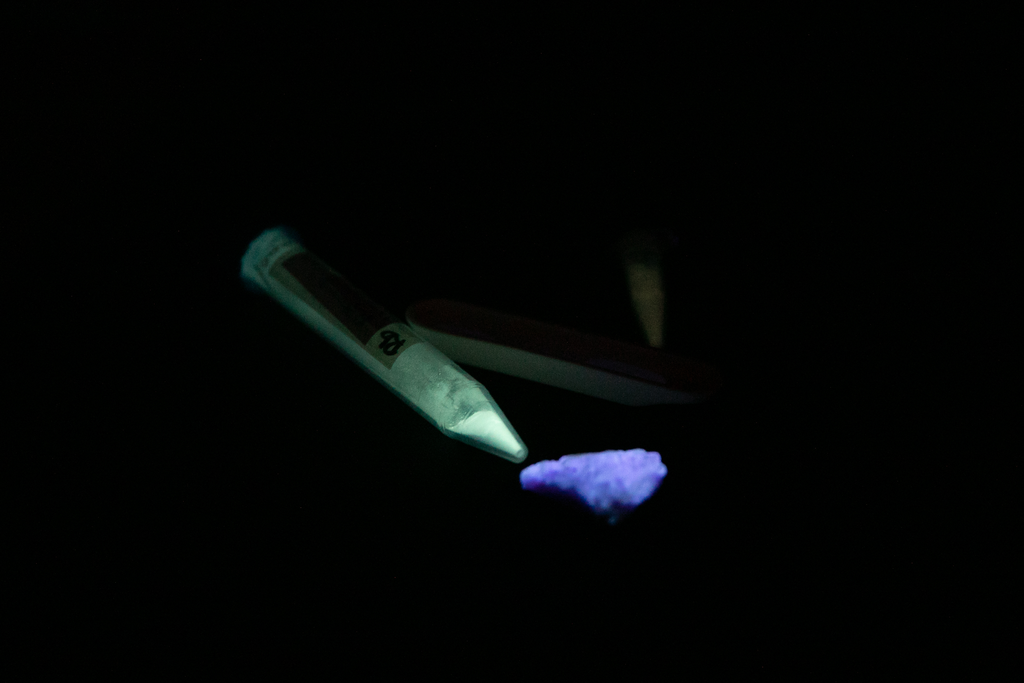
One of the many properties of hackmanite is its afterglow, meaning that the material continues to glow even after exposure to UV light. Photo: Suvi Harvisalo.
The Intelligent Materials Research Group, led by Lastusaari, is currently working on several other projects to develop hackmanite for various applications.
Photo at the top of the page: ISS, by NASA Johnson
